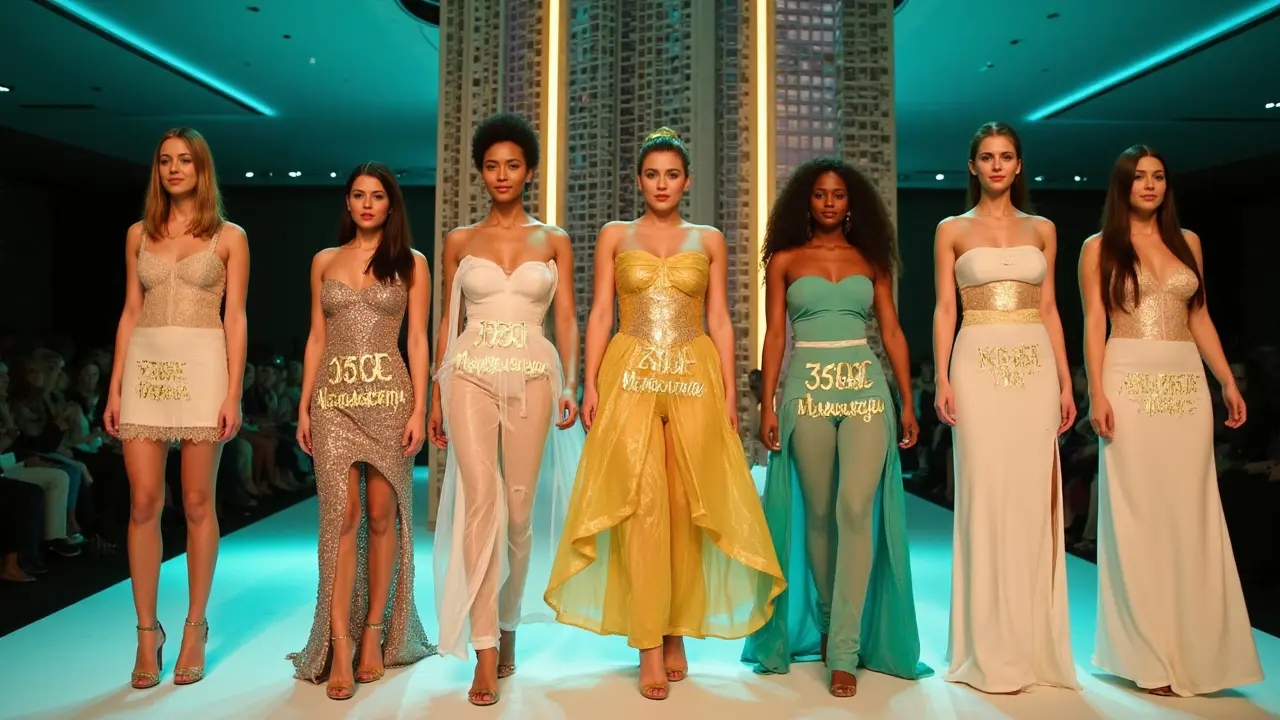Discover how much a model really weighs, what affects model weight standards, and how the industry is changing in the UK. Real numbers, charts, and insider info.
Average Model Size: The Real Numbers Behind the Runway
Ever wonder what “average model size” really means? It’s not a secret that fashion models look thin, but the exact measurements differ by market, season, and the type of work.
Typical measurements you’ll see on most runways
Most high‑fashion runway models fall between 5’9” and 6’0” tall. Their bust‑waist‑hip numbers usually hover around 34‑24‑34 inches (86‑61‑86 cm). Shoe sizes are commonly a US 6‑8 for women. These figures have become the unofficial benchmark for many designers because they showcase clothes the way the brand intends.
Why the “average” isn’t one‑size‑fits‑all
The fashion world isn’t monolithic. In commercial advertising, models often range from 5’5” to 5’9” with more flexible measurements—think 36‑26‑36 inches (91‑66‑91 cm). Plus, the rise of plus‑size and petite categories means the definition of “average” keeps expanding. Brands now hire models that reflect real‑world shoppers, so the numbers you see on Instagram or in catalogs can be quite different from runway stats.
Understanding these ranges helps you pick the right clothing size, see why some outfits look better on certain bodies, and even spot unrealistic standards. If you’re a budding model, knowing the typical measurements can guide your portfolio and fitness plan—but remember, the industry values diversity more than ever, and there’s room for many body types.
Designers use these averages to draft sample sizes and create patterns. When a pattern maker knows a model is 5’10” with a 34‑24‑34 frame, they can draft garments that flow correctly and look proportional on the catwalk. That same pattern is then graded up or down for retail sizes, which is why a size 2 in a store often mirrors the runway look.
For shoppers, the “average model size” can be misleading. Retail sizes are based on measurements that differ from the live model on a runway. A size 4 in a boutique might correspond to a model who’s 5’6” with a 34‑26‑36 frame, not the 5’9” runway standard. Knowing this gap helps you avoid disappointment when a piece looks smaller or larger than expected.
Aspiring models often wonder if they need to shrink or grow to meet the average. The truth is, confidence and health matter more than hitting a specific number. Agencies now look for strong presence, unique features, and the ability to convey a brand’s story. While meeting basic height and proportion guidelines can open doors, it’s not the sole ticket to success.
Myths abound: some think that all models are the same size, or that the average dictates beauty. In reality, the industry is shifting toward inclusive casting, and new standards are emerging daily. Seeing a broader range of sizes on the runway is becoming the norm, not the exception.
Finally, technology is changing how sizes are measured. Digital body scanning and virtual fitting rooms give designers precise data without relying on a single “average.” This tech gives shoppers a more accurate fit and helps models of all shapes illustrate how garments truly look.
So, next time you read “average model size” in an article, think of it as a loose guideline, not a hard rule. Look at the specific market—high fashion, commercial, plus‑size—and you’ll get a clearer picture of what size really means in that context.

